Pac-Man Museum review – Take a tour of Pac-Man's greatest hits on Xbox 360
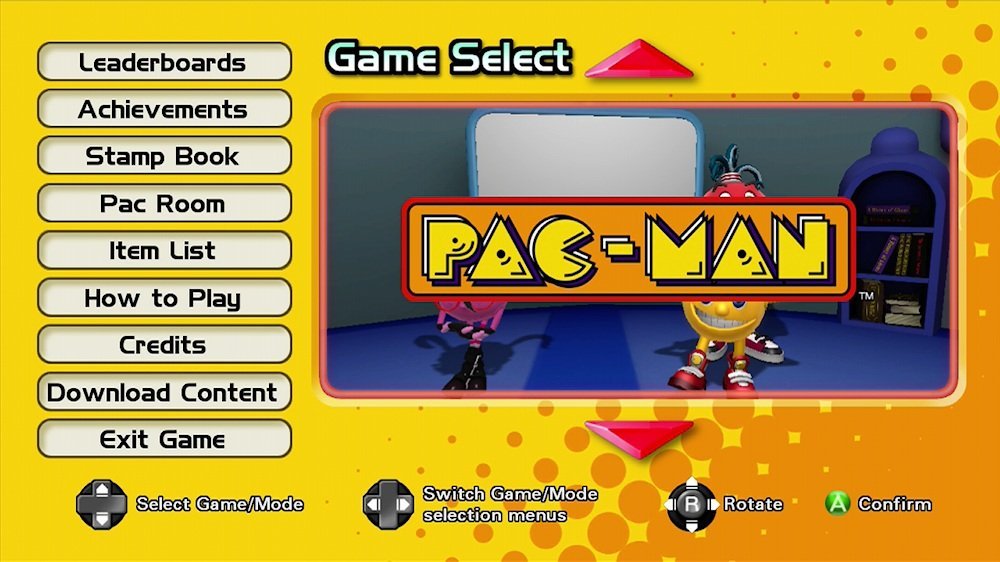
We first looked at Pac-Man Museum during last year’s E3, where it served as part of Namco’s push to reinvigorate Pac-Man with modern audiences. The same push includes an animated show and game called Pac-Man and the Ghostly Adventures, as well as the updated Pac-Man Championship Edition DX+ on both Windows 8 and Xbox 360.
At last Pac-Man Museum has arrived on Xbox 360 and Playstation 3 to teach gamers the history of Pac-Man by packaging nine of his classic games in one downloadable collection.
Pac-in games
Pac-Man Museum contains nine (mostly) great games. Noticeably missing are most of the Midway-developed arcade entries like Jr. Pac-Man; the 16-bit console adventure game Pac-Man 2; and the 1996 arcade game Pac-Man Arrangement (though Museum does include a different Arrangement game).
Pac-Man (1980):
The original arcade game that introduced Pac-Man and his ghostly antagonists to the world. For those that may not be familiar with this classic, the game consists of a single maze filled with tasty dots. Each time Pac-Man eats all of the dots and clears the maze, it refreshes and the ghosts move faster.
This game was so popular that strategy books for it actually appeared on the New York Times bestseller list and the song “Pac-Man Fever” reached number 9 on the Billboard Top 100 chart. Pac-Man is the only game from this collection to be released on Windows Phone (see our review).
Super Pac-Man (1982):
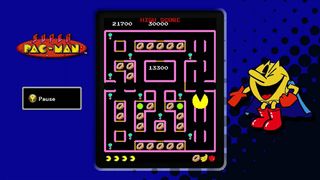
The first official sequel to Pac-Man was inspired by an intermission sequence in the original game featuring a giant Pac-Man. Super Pac-Man did not appear on home consoles until it reached the original Playstation in 1996!
The goal is still to clear the maze, but dots have been replaced by fruits. Mazes also hold locked doors that can be opened by keys. By eating one of two Super Power Pellets, Pac-Man turns “Super” and can safely move through ghosts and locked doors. Bonus levels appear every few levels as well.
Get the Windows Central Newsletter
All the latest news, reviews, and guides for Windows and Xbox diehards.
Pac & Pal (1983):
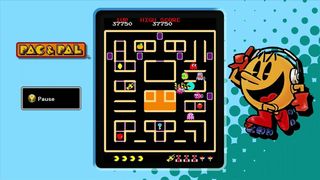
This off-kilter follow-up to Super Pac-Man introduces a helper character named Miru. She grabs fruits and items, dragging them back to the ghosts’ base.
Pac-Man can eat special items that allow him to stun enemies with projectiles. Pac & Pal features not only bonus levels but also background music, a first for the series.
Pac-Land (1984):
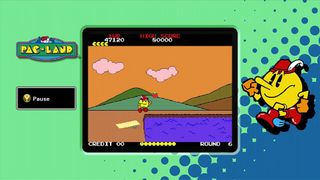
Before Super Mario Bros. took the world by storm, Pac-Man starred in his own arcade platformer based on the American Pac-Man cartoon series. Pac-Land seems deceptively simple, but holds tons of secrets.
The arcade version of Pac-Land ditched the standard joystick in favor of three buttons: left, right, and jump. The home version simply maps left and right to the d-pad. For the most part this is fine, but some levels contain springboards that require the player to press right on the d-pad repeatedly in order to cross gaps. If you don’t tap the direction ridiculously quickly, you’ll fall and die.
Pac-Mania (1987):
The final Pac-Man arcade game until 1996. Pac-Mania plays much like the original Pac-Man, but uses a pseudo-3D isometric perspective. The new viewpoint makes for an attractive presentation, except that you can barely see anything to the left or right of Pac-Man due to the close view.
Pac-Mania features four distinct mazes and actually has an ending, unlike previous games. Pac-Man can now jump, which is cool. But so can one of the two new ghosts, largely negating the usefulness of jumping in later levels.
Pac-Attack (1993):
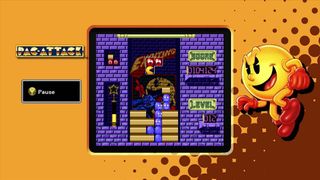
A falling-block puzzle game designed for consoles; this version originated on the Sega Genesis.
There are three main types if pieces: blocks, ghosts, and Pac-Man. Filling a horizontal line with blocks makes it disappear, just like in Tetris. Ghosts pretty much pile up until you drop a Pac-Man piece. The yellow guy then eats all the ghosts in his path.
Pac-Attack’s gameplay is unintuitive compared to games like Tetris and Puyo Puyo. I’ve never cared for it.
Pac-Man Arrangement (2005):
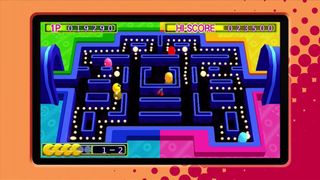
For some reason, there have been two completely different games called Pac-Man Arrangement. The first one showed up in arcades in 1996, yet isn’t part of this collection. Instead, we get the second Arrangement game that started out on PSP as part of Namco Museum Battle Collection.
This Arrangement plays like the original Pac-Man but uses 3D graphics and a widescreen presentation. Pac-Man now travels along a world map, with each location containing a number of unique levels. At the end of every series of levels you’ll face a gigantic boss.
With lots of new items and unique gameplay mechanics, Arrangement is one of the best games in this collection.
Pac-Man Championship Edition (2007):
The only sequel designed by the creator of Pac-Man, Toru Iwatani. Championship Edition (CE) first appeared as an Xbox Live Arcade game. It never came to Windows Phone, although we did get Pac-Man Championship Edition DX.
In CE, each maze is divided into two halves. Eating all of the dots in one half will cause a fruit to appear. Chomp that and a fresh pattern of dots appears in the other half of the maze.
Players now select a 5- or 10-minute timed mode and then try to earn as many points as possible during that time. Afterward, a chart displays the player’s scoring progress during the allotted time.
Pac-Man Battle Royale (2011):
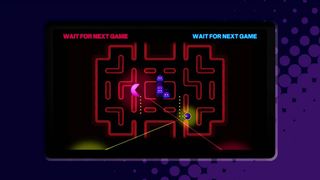
Namco Bandai created this multiplayer version of Pac-Man for limited arcade distribution; Museum is its first home port.
In Battle Royale (BR), up to four players control their own colored Pac-Man. Everyone can eat dots and ghosts, but that’s not the main point. You really want to cause the other Pac-Men to die by either bumping them into a ghost or by eating a power pellet and then cannibalizing them.
BR is fun in short sessions, but the low-budget nature hampers its longevity. You can’t select mazes, rules, or any options other than the number of rounds. This one could have used a little extra TLC in order to keep console players coming back for more.
Ms. Pac-Man too
The only Midway-developed sequel that Namco recognizes in the Pac-Man canon, Ms. Pac-Man is probably a better game than the original. It introduces four distinct mazes, multiple warp tunnels in each maze, and a faster pace than Pac-Man.
Ms. Pac-Man is a $5 DLC add-on in Museum. However, anyone who downloads the DLC before the end of March won’t have to pay a thing. That’s good because this version lacks the optional goals that other Museum games feature. The separate Ms. Pac-Man XBLA game is a better value.
Collectibles and presentation
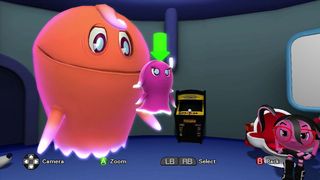
Museum features an attractive (if poorly-laid out) interface themed around the Pac-Man and the Ghostly Adventures cartoon. By completing optional challenges in each of the nine main games, players can populate the “Pac Room” with 3D characters from the show. Recreations of actual Pac-Man memorabilia would’ve been a better fit, but the publisher understandably wanted to promote the new show.
While I love most of the games within this collection, the presentation of the games themselves is surprisingly poor. All of the games except for Championship Edition run at lower than 720P native resolutions and thus are displayed with decorative borders. The borders look good and match the Pac-Man theme, but there’s no way to stretch the images to fill the screen. A retro collection in this day and age should include some display options.
Also, you can’t view a game’s goals from within the game itself. You have to clumsily navigate back to the main menu and select the Stamp Book.
Achievements
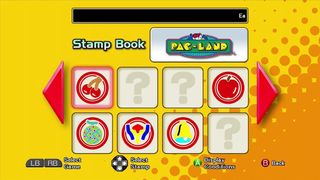
Most of Museum’s 400 GamerScore worth of Achievements revolve around collecting stamps from the nine main games. Each of those games offers eight challenges such as reaching specific scores or eating 100 ghosts. To get every Achievement you’d need to complete every single goal. Unfortunately, several games like Pac-Land have one or more ridiculously hard goals.
If Ms. Pac-Man had offered stickers that contributed towards the overall goal of 72 stickers, Museum would be tough but reasonable to complete. Instead, you have to be a literal Pac-Man master. As of 2015,only fifteen people have unlocked all 12 Achievements.
Overall Impression
It’s no hyperbole to say that Pac-Man Museum is the best collection of Pac-Man games ever released. Most of these games have appeared in past collections, but always spread out across multiple volumes. Sure a few games are still missing. But you do get all the classic Namco arcade games plus the expansive Pac-Man Arrangement and the fun-with-friends Battle Royale.
Many online users have expressed concerns with Pac-Man Museum’s price. $20 is steep for an XBLA/PSN game, which usually top out at $15. Still, collections like this often sell for $20 at retail. Presentation issues aside, there has never been a better assortment of Pac-Man games in one package. Pac-fans should snap Museum up right away – or wait for a sale.
- Pac-Man Museum – Xbox 360 – 230 MB – $19.99 – Xbox.com Link
Paul Acevedo is the Games Editor at Windows Central. A lifelong gamer, he has written about videogames for over 15 years and reviewed over 350 games for our site. Follow him on Twitter @PaulRAcevedo. Don’t hate. Appreciate!
